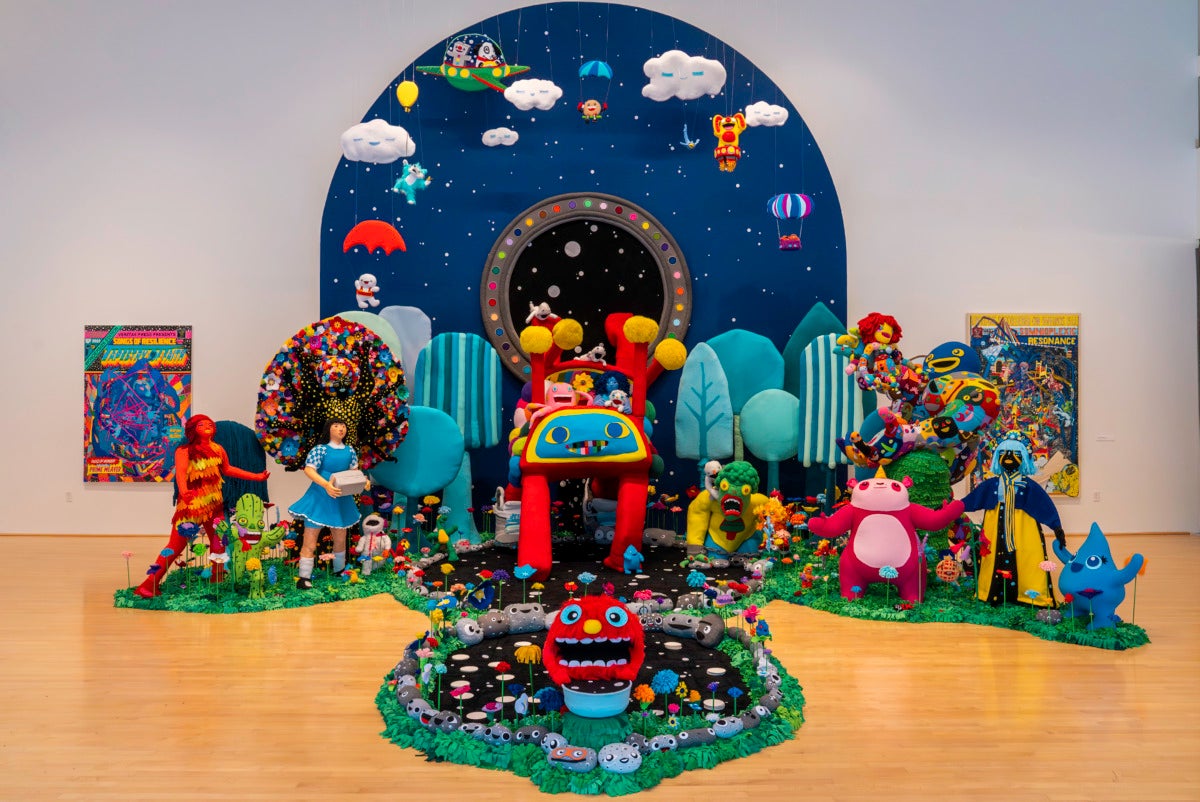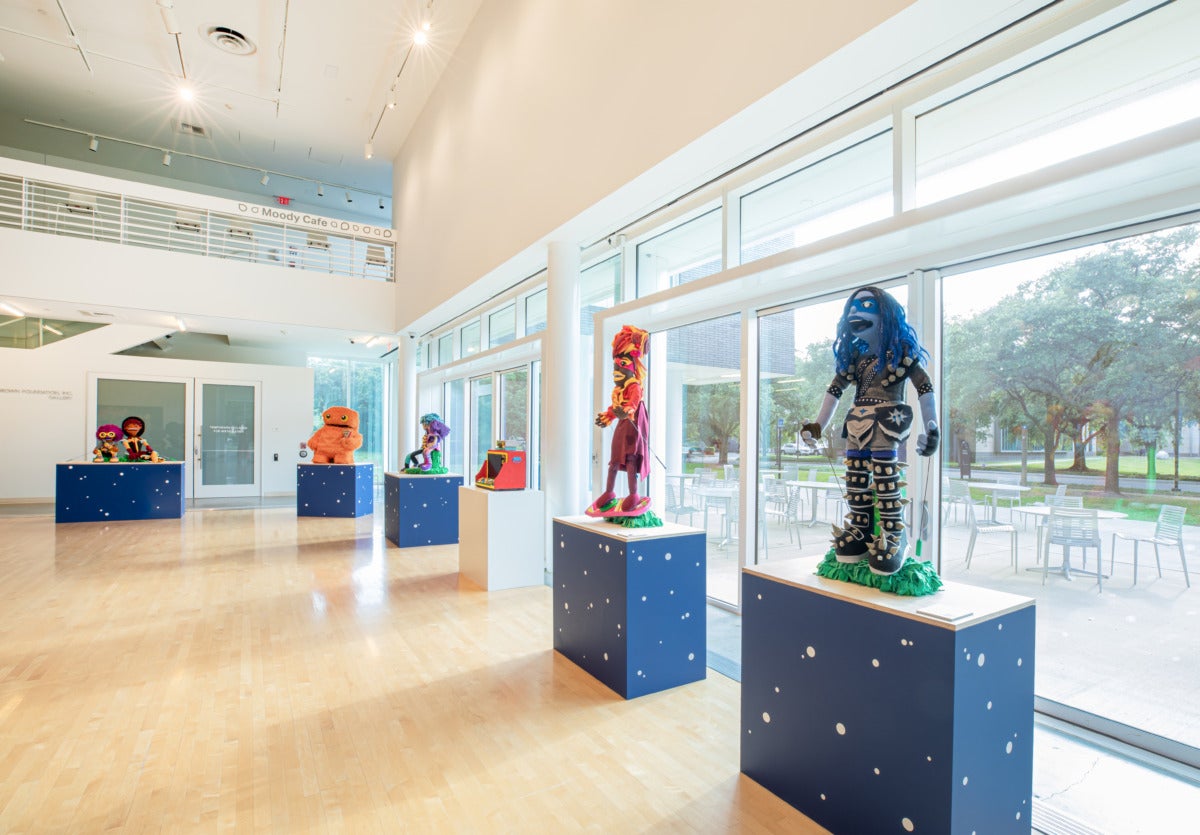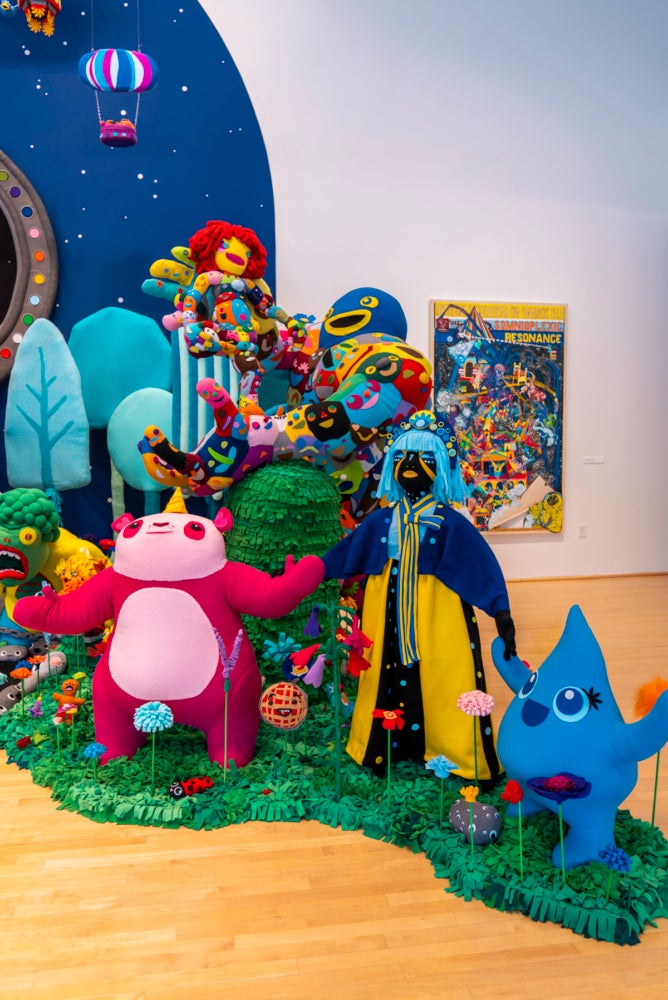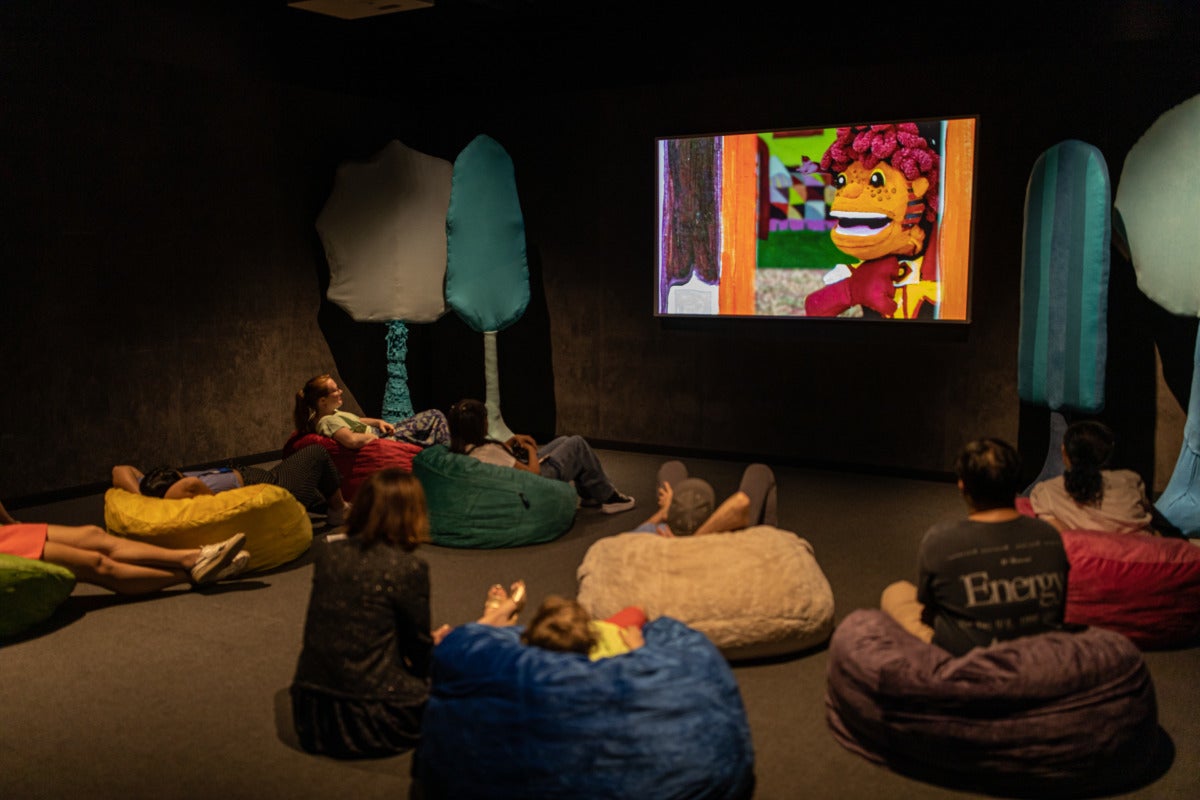
Muppets, anime characters, and Marvel trading cards are the fuel for JooYoung Choi’s fantasies. Her art looks effortless, but the topic, unconditional parental love, is a sentiment that is hard to render visually without plunging into the syrupy abyss of Anne Geddes postcards and Catholic iconography. Brought to the US from South Korea as an infant, Choi was removed from a functioning diaspora and healed otherness with mass culture. Her artist statement relays a tongue-in-cheek mission “to promote the teachings of [kids TV presenter] Fred Rogers”. Choi first met her birth parents when she was in her twenties. Unlike the protagonist of Return to Seoul (2022), a recent critical hit movie that centers on a heroine with a similar backstory, Choi’s reunion was profoundly warm. “I’d never fully felt that in my life before, just unconditional love,” she told Houston Chronicle in 2020, when her own artistic universe was steadily expanding.

The exhibition at Moody’s Center for the Arts is another sequel to the Cosmic Womb, a collection of sculptures, paintings, films, and puppets that builds on the principles of inclusion and positivity. The Cosmic Womb belongs to a distinguished lineage of worlds seemingly for kids and shares the colors and psychic makeup of Wonderland, Oz, Pepperland, and other Narnias. For Choi, Wondervision is a state of open-hearted empathy towards “the others who care for us and help us grow.” The central piece is a sprawling installation that is part baroque grotto, part cartoon title sequence. It gathers most of the inhabitants of the Cosmic Womb in a fairytale diorama, with the artist’s avatar, a girl in a blue dress, placed in the midst of the action. She’s Alice, Dorothy, and the Beatles all at once: part of Choi’s creations is glitchy pop music in the delightfully wacky vein of Yoko Ono’s solo compositions. The paintings imitate sci-fi magazines and comic book illustrations, allowing us to navigate the artist’s many characters. Some of them are displayed on pedestals with short bios attached. There’s Mondo Jones, a “teenage transgender male space cowboy,” dressed in a fringe shirt and vaguely cosmic boots. There’s Roro, an “intersex gender-fluid warrior,” whose abilities include “electro-power blasts and cosmic healing.” For every other creature, the pronouns are listed alongside superhuman abilities.

Choi’s non-binary utopia dispenses with Western duality that always prepares ground for a battle of good versus evil. There are no villains in Choi’s Cosmic Womb: some characters are space bullies, but their influence on the well-being of others is minimal. The good far outweighs evil, creating an emotional imbalance: Choi’s characters wield remarkable powers and channel energies that have limited application. While Houston justly celebrates its diversity, the state’s agenda moves steadily to the right. Governor Greg Abbott banned TikTok on state-issued devices earlier this year, limiting the reach of a platform that provides a youth-oriented outlet for varied representation of gender expression. Choi’s exhibition can serve as analog TikTok. It celebrates fluidity as a state of childlike wonder, while also providing a cure for estrangement that escalated during the lockdowns. Negative experiences are quickly recycled into yet another imaginary friend. Nina Blue, for example, represents the tears of Choi’s both adoptive and biological parents, in an anthropomorphic “spirit of hope.”
Spiritually, the work stands close to Takashi Murakami, another artist who welds polychrome utopias out of a desperate sense of his country’s historical trauma. Like in Murakami, it’s not the narrative that matters, but the unrelenting rhythm of colors and forms that creates a sugar rush. It’s important to remember, though, that Choi’s works only looks effortlessly positive. To sustain such a level of technicolor joy takes concentration. And sometimes Choi lets her vulnerability slip, especially in her videos, where sadness and disorientation manifest themselves in awkward cuts and hastily assembled set pieces. The show, however, goes on, because even the darkest feelings are there to be reincarnated as rainbow-colored avatars of emancipation from all kinds of grown-up grievances.





